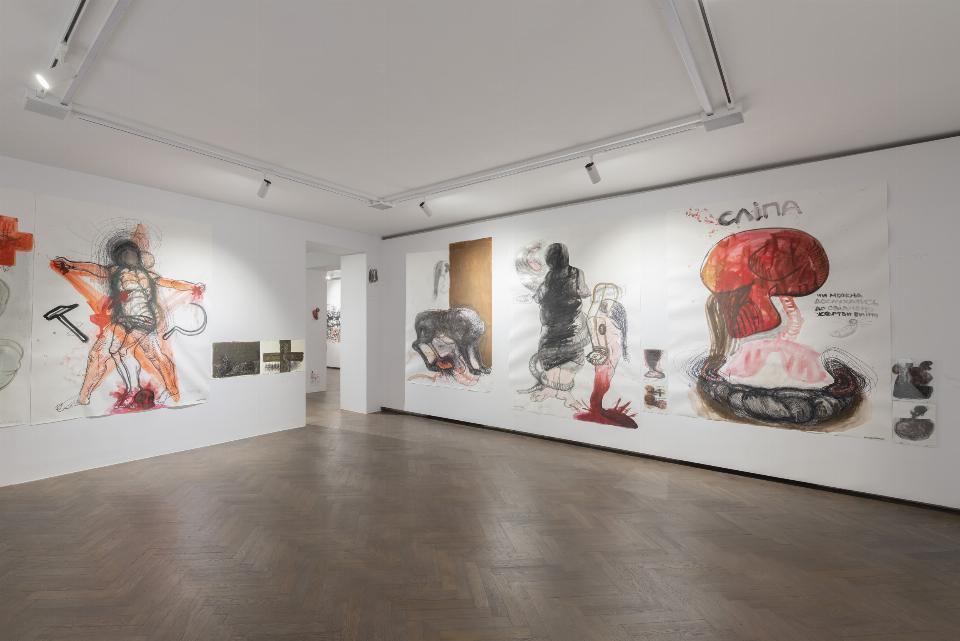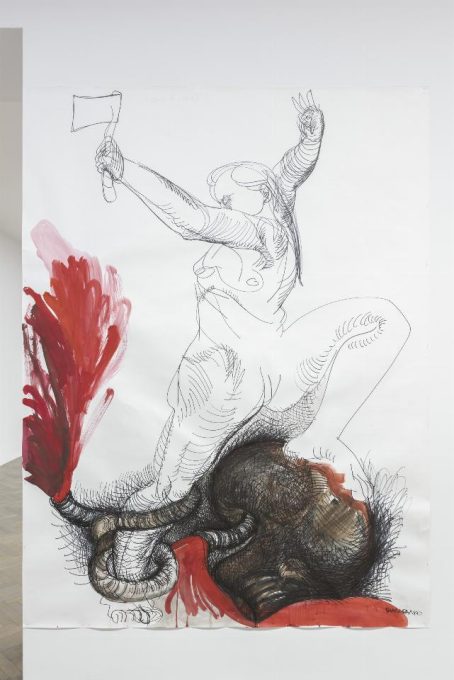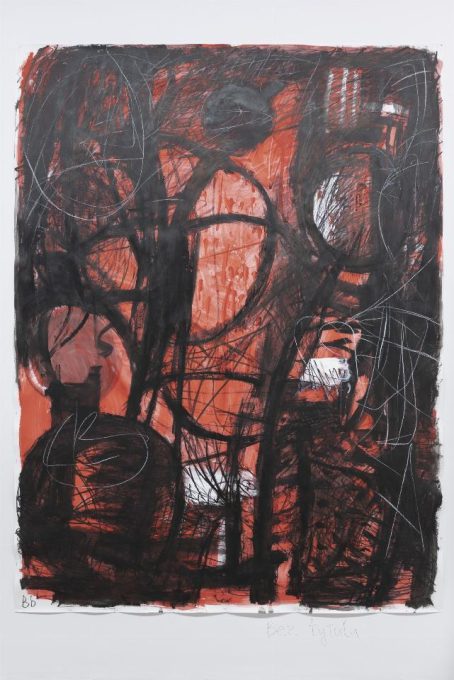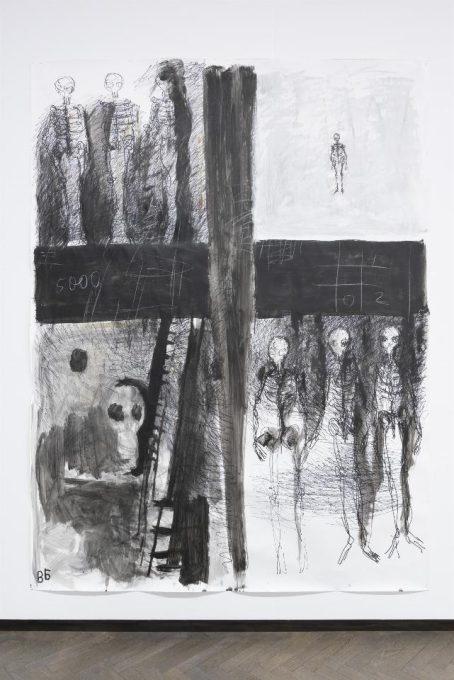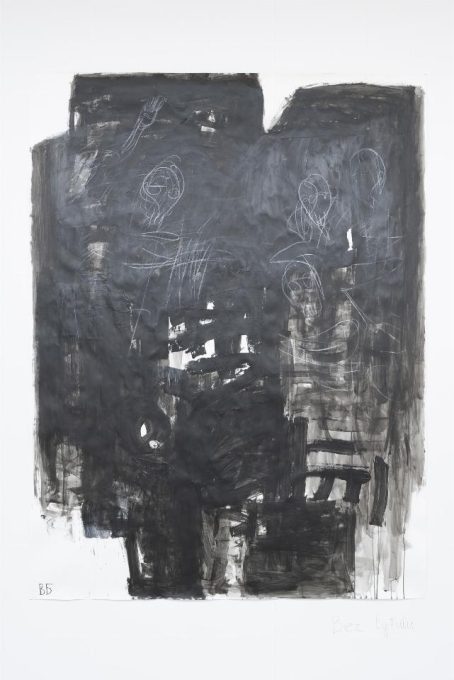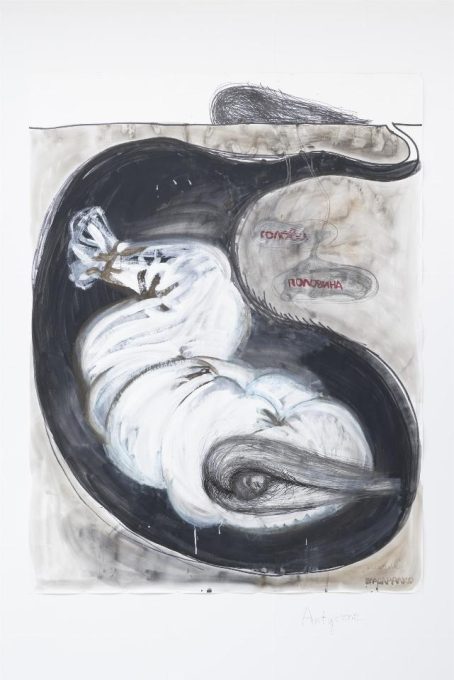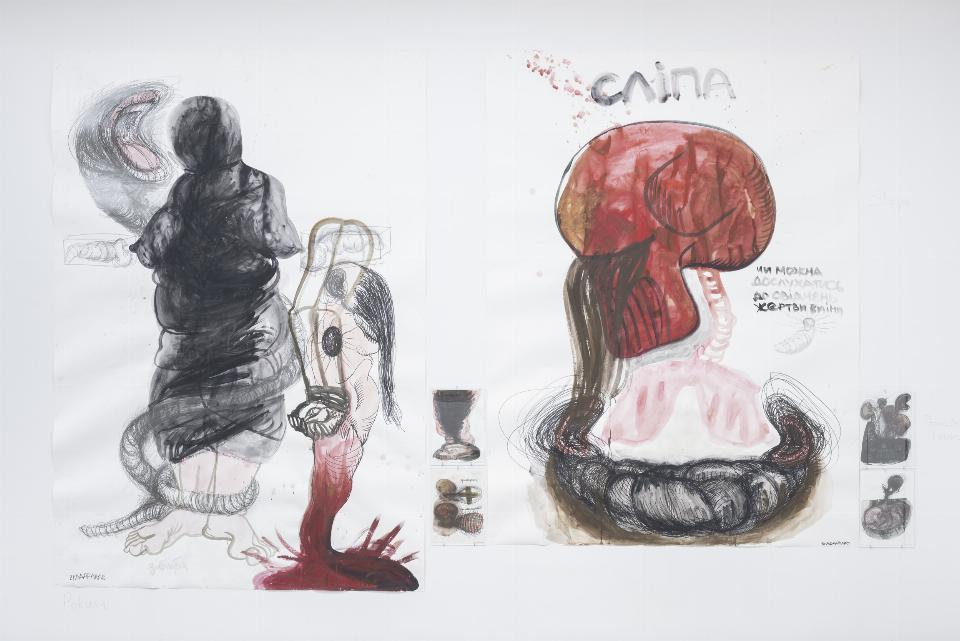Vlada Ralko i Volodymyr Budnikov. Questioning the Visible / Питання до видимого
VLADA RALKO AND VOLODYMYR BUDNIKOV
QUESTIONING THE VISIBLE / ПИТАННЯ ДО ВИДИМОГО
Organiser: “Arsenal” Gallery in Białystok
Venue: “Arsenal” Gallery in Białystok, Mickiewicza 2
October 10th – November 24th 2022
Curator: Monika Szewczyk
The exhibition is intended for an adult audience
visual identification of the exhibition: Katarzyna Siemieniako
“Questioning the Visible” / „Питання до видимого” is a joint show by Vlada Ralko and Volodymyr Budnikov, the outcome of their residency at the “Arsenal” Gallery in Białystok over September and October 2022. Since early days of Russia’s aggression against Ukraine, the artists have been recording emotions triggered by these developments, chiefly in drawing form. “Arsenal” Gallery’s collections include Vlada Ralko’s “Kyiv Diary” (https://galeria-arsenal.pl/prace/dzienniki-kijowskie-1), and forty expressive drawings and watercolours of the nearly four hundred created at regular intervals during the Kyiv Maidan events. Given their artistic quality, geographical area they hail from and socially involved subject matter, these artworks are of particular significance.
QUESTIONING THE VISIBLE
Speaking of the obvious tends to be the most difficult thing of all.
Most frequently, the visible adapts to a finished schema. Uncomfortable details blurred by generalisation, the ascertained morphs into the abstract. Rationality hooks onto established values of humanity.
Intellectuals of the West find it difficult to acknowledge the validity of the ascertained, of implied simplicity received on the brink of war as part of the deal, as it were, rather than developed in a complex thought process. Moreover, calling for freedom and democracy to be defended by force based on solidarity hints at aggressive romanticism, a thing contradicting common sense. The rational mind has a tendency to combine incomparable matters in shared space, weighing ditches full of Ukrainian corpses against heating costs. Aspiring to impartiality, rationality shields humans against their capacity for feeling.
The near-sightedness of rational perception is the admonition of evil in pure form which has descended upon mankind, hazardous in its blinding glare. One may well suppose that the world finds it convenient to close its eyes to crimes committed in the open, dazzling and rational light shed upon them. Is that the kind of light Ukrainians have in mind in their daily prayer, “Light, may you become my weapon!”?
In this day and age, intellectuals of the West find themselves hostage to the double image of the Soviet regime; having once taken immense care to camouflage its crimes, the regime is now committing them in the open many years later, wielding its dream of a better future like a diabolical lure.
In all actuality, mankind has been failing to put its best foot forward ever since the Soviet Union’s downfall; in its perpetual trust that the communist ideal will ultimately become reality, it has been refusing to frankly admit that while condemning Nazism, it has remained oblivious to Soviet crime.
In paraphrasing Adam Zagajewski, it may well be claimed that it was convenient to see some things while occasionally failing to notice them.
The visible may be distant from what it seems to be while overlaying its own boundaries. It is high time that we query the visual arts what is their purpose today, reality swiftly developing along the frontlines. As it were, art’s sensitive mechanism has a capacity for exacerbating the matter of boundaries as a disintegration-preventing structure. War has brought into clear focus that delineating an object in its existence is no guarantee. All in all, artistic accountability translates into political capacity of language, becoming a foundation for expression which, when misrepresented, simply does not occur rather than lose something of its quality. Socialist ideology has been destroying the concept of private property – or, to put things bluntly, assets (defined as material goods and virtue) – as a guarantee of the presence of the human in existence for such an extended period of time that left-wing intellectuals have until this day remained under the spell of the concept of an alternative world, transnational and cross-border in nature. Conversely and in point of fact, reality is singular and irreplaceable, the current war waged for boundaries indeed – to be specific, boundaries of the human.
FINANCED BY THE STABILISATION FUND FOR CULTURE AND EDUCATION – AN INITIATIVE PROVIDING ASSISTANCE TO CULTURAL AND EDUCATIONAL ORGANISATIONS IN UKRAINE and EASTERN AND SOUTH-EASTERN EUROPE AND CENTRAL ASIA, AFFECTED BY CONSEQUENCES OF THE WAR IN UKRAINE

PLAN YOUR VISIT
Opening times:
Thuesday – Sunday
10:00-18:00
Last admission
to exhibition is at:
17.30

